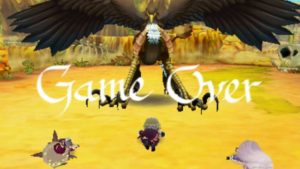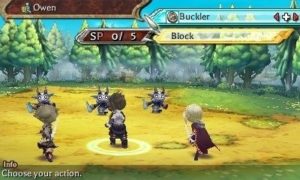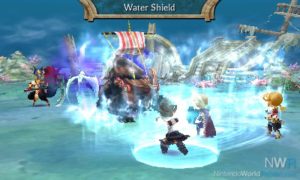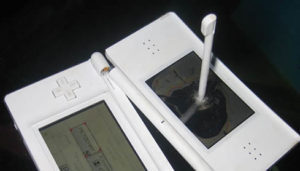 Time for another edition of games that sucked too much to even blog about.
Time for another edition of games that sucked too much to even blog about.
Past editions: 2014, 2013, 2012, 2011 (there was no 2015 edition)
Crimson Empire ~Circumstances to Serve a Noble~ (PSP) – Otome game about an ex-assassin hired to protect a noble from other assassins. I detest Quinrose games because they always feature the most unlikeable love interests possible, but this game was supposed to have some kind of gameplay in it. It probably does, since I was asked to choose between Easy Mode and Normal Mode at the beginning. But in the two hours I spent alternately reading and fast-forwarding through reams of text, I saw none. Instead I had to sit through a lot of very, very boring and off-putting scenes.
Key lowlights: a demon who can’t stop kissing our heroine even though she’s only about 8 at the time, another guy who casually dislocates our heroine’s shoulder for talking back to him (cue everyone around gushing about how much he must like her since he personally took the time to injure her) and then finally she starts to serve the noble in the title and his first act is to tug on her hair painfully while she screams at him to stop. Okay, thank you, I’m outta here!
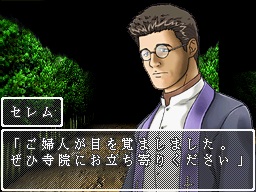 Wizardry Asterisk: Hiiro no Fuuin & Wizardry Boukyaku no Isan (DS) – Since I was having so much fun with more modern dungeon-crawlers like Entaku no Seito, I thought it might be fun to explore more traditional ones as well. I started each DS Wizardry game and wandered around the first dungeon for a while but quickly lost interest. I guess I underestimated how much of a graphical snob I was, plus I’ve been spoiled by the high polish of Experience Inc. games. TL;DR the DS Wizardry games were TU;DP (Too Ugly; Didn’t Play).
Wizardry Asterisk: Hiiro no Fuuin & Wizardry Boukyaku no Isan (DS) – Since I was having so much fun with more modern dungeon-crawlers like Entaku no Seito, I thought it might be fun to explore more traditional ones as well. I started each DS Wizardry game and wandered around the first dungeon for a while but quickly lost interest. I guess I underestimated how much of a graphical snob I was, plus I’ve been spoiled by the high polish of Experience Inc. games. TL;DR the DS Wizardry games were TU;DP (Too Ugly; Didn’t Play).
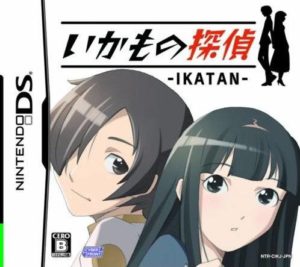 Ikamono Tantei, also known as Ikatan (DS) – A detective “game” about an agency that handles strange incidents that are deemed too trivial for the police to tackle themselves. For example the first case involved strange deliveries to a woman’s apartment. Deliveries of bulky toys that she had no choice but to store on her balcony, which just happened to be across the alleyway from a children’s hospital…
Ikamono Tantei, also known as Ikatan (DS) – A detective “game” about an agency that handles strange incidents that are deemed too trivial for the police to tackle themselves. For example the first case involved strange deliveries to a woman’s apartment. Deliveries of bulky toys that she had no choice but to store on her balcony, which just happened to be across the alleyway from a children’s hospital…
The premise was good, but the gameplay was pure visual novel, just going around questioning various people before an arbitrary time deadline hit – why is there even a deadline for such petty cases? What killed me was your bossy, pushy partner who was the daughter of your boss or somesuch so you couldn’t cross her but had to let her run roughshod all over you like a cheap mat. Please, spare me.
Sekai wa Ore de Mawatteru (PC) – Free game from Inutoneko, the makers of Lemuore no Renkinjutsushi, Harettari Kumottari N and Kaiyou Resutoran Uminekotei, all of which I loved and enjoyed. This particular game is a Comiket simulation of sorts, where money-grubbing character Shiba tries to make a quick buck by selling photobooks at a doujinshi market. Nothing wrong with the concept, but the gameplay was tedious with a lot of downtime spent waiting around hoping for people to come check out your stuff. A little too lifelike, haha. It probably gets better as you publish higher-quality books and get a name for yourself but the initial stages were too boring to keep me playing.
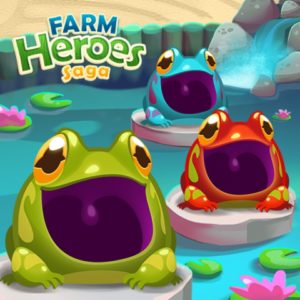 Farm Heroes Saga (Android) – Match-3 puzzle game with a vegetable gimmick. Shouldn’t really be on this list because I played this game a lot. A LOT. I know I made it past level 400, because that’s where the frogs first appear. I made it through the rabbit stages and the bomb stages and the spider stages, but gross-looking frogs that come in and lick up all your hard work were the last straw. Delete, delete, delete!
Farm Heroes Saga (Android) – Match-3 puzzle game with a vegetable gimmick. Shouldn’t really be on this list because I played this game a lot. A LOT. I know I made it past level 400, because that’s where the frogs first appear. I made it through the rabbit stages and the bomb stages and the spider stages, but gross-looking frogs that come in and lick up all your hard work were the last straw. Delete, delete, delete!
Pet Rescue Saga (Android) – Click on groups of blocks to make them vanish so you can get the pets on top all the way to the bottom. Kinda hard, also kinda boring. Even though it’s the one King.com game that you can successfully Google or Youtube your way through, I wasn’t motivated to do even that. Made it to level 50 or so then uninstalled it.
 AlphaBetty Saga (Android) – Game where you create words from alphabet blocks. Started out well then got annoying quickly when they introduced word quotas then put all kinds of obstacles like locked blocks and mousetraps in your way to keep you from achieving them. Dropped like a hot bucket.
AlphaBetty Saga (Android) – Game where you create words from alphabet blocks. Started out well then got annoying quickly when they introduced word quotas then put all kinds of obstacles like locked blocks and mousetraps in your way to keep you from achieving them. Dropped like a hot bucket.
Candy Crush Saga (Android) Also shouldn’t be on this list since I played past level 1000, but included for closure since I once made a post about it. The levels all felt the same after a while, and then they included bombs one too many times and I just snapped.
Coded Soul: Uketsugareshi Idea (PSP) – Another game I played at length and even wrote about. Included here because I tried to continue it at the end of last year only to realise the magic was gone. I can’t remember what I ever saw in this game. All that lingers is the painful memory of slogging through a long, unsaveable dungeon only to die at the end. Unforgiveable. It’s over between us.
Summon Night Twin Age (DS) – Not sure whether to include it or not, since given my history with Summon Night games I might end up giving it another try. But the touchscreen-only controls were immensely off-putting, so much so that I quit immediately after the very first boss battle. So far it seems like one person auto-attacks while the other person just stands around spamming healing items and trying not to die? Do not like.
 Shin Megami Tensei: Devil Summoner (PSP) – Tried this more than two years ago. It had something to do with a regular joe who got his body switched with a demon hunter or something bizarre like that, last thing I recall was my character wandering around a studio lot looking for his girlfriend, I think? The primitive graphics did me in (TU;DP) and the dark premise didn’t help much either. I doubt I’ll ever play it again so… yeah.
Shin Megami Tensei: Devil Summoner (PSP) – Tried this more than two years ago. It had something to do with a regular joe who got his body switched with a demon hunter or something bizarre like that, last thing I recall was my character wandering around a studio lot looking for his girlfriend, I think? The primitive graphics did me in (TU;DP) and the dark premise didn’t help much either. I doubt I’ll ever play it again so… yeah.
Shin Megami Tensei: Devil Summoner: Soul Hackers (3DS) – I played about 2, 3 hours of this. Enough to make it into some skyscraper or the other and wander around and then stumble into the first boss’s room and die. Part of me wants to go back and level up a bit so I can continue the game but a bigger part of me is like “Meh!” so it goes on this list.
That’s it for last year. I liked it better in 2015 when I didn’t have any games to put on a list like this. Here’s hoping 2017 works out the same way. See you next year!

